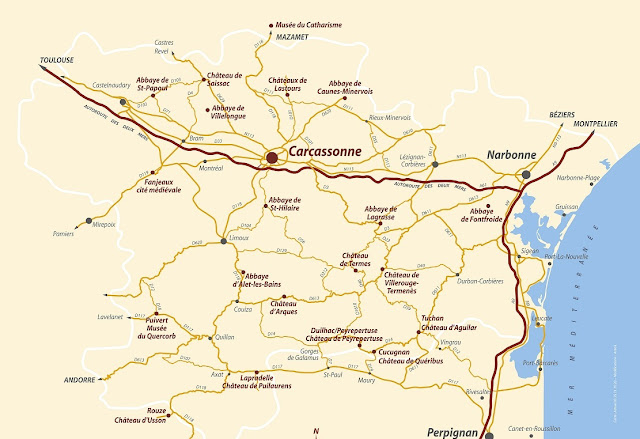Basic historical and geographical orientation...
Living Christianity
Primitive Christianity dates back to the time of Paul/Saul of Tarsus (known as St Paul) just after the death of Jesus Christ and it is possible to detect this thread through countries and centuries, continually changing form and name. This flowing and self transforming stream lived and lives to this day, avoiding the dangers of being fossilised or perverted into inappropriate 'created forms' (narrow thinking, power structures, dogma and worse). One such stream was a dualist or 'gnostic' stream, big names on the way are; Manicheans (Persia, 210-276 AD), Paulicians (Armenia 7th Century) and Bogomils (Bulgaria, perhaps Macedonia? 10th Century).
Cathars (Cathares in French)
The people who became known as 'Cathars' (pure ones) probably derived from these kinds of roots and in the 11th/12th centuries migrated to parts of France, Italy, Flanders Germany and the UK. They were known as 'Tisserands' in some parts as they often earned their living as weavers. The only place they were not persecuted and burned, and where they eventually gathered and settled was in the region of Southern France/Northern Spain, known today as 'Pays de Cathares'.
How this area is defined is a little confusing in terms of modern France, it is based on a historical grouping of mini kingdoms including, but we're talking South of France, Toulouse, Carcassonne as major cities, something like this:
The 'cathars' understood both good and evil and what evil is responsible for on earth (termed a kind of 'dualism') they understood that they would need to incarnate for as long as it took to be purified and released from the influence of evil. In practice they were social activists, helping those around them with shelter, food, healing by laying on of hands and use of local herbs, they were promoters of women (they had women pasters, homes for widowed or single women run by women), denied the church hierarchies and rituals, employing their own simple rituals where they found themselves, at a committed level they were vegetarians who occasionally ate fish, avoided killing and were committed to non-violence. They had a simple 'hierarchy' based on commitment and spiritual development, their 'pasters' were known as bonshommes or bonnefemmes/dames (goodmen and goodwomen). You could become a bonshomme/femmes at any point in your life, married or not, many women became bonnefemmes after their children had grown up, however, once engaged, celibacy was required. They travelled the land preaching.
The Cathars fell before the Catholic dominating authority and were persecuted, tortured and burned. They took refuge in fortified castles relying on local lords and their knights to defend them, as they themselves would not fight. By the 13th century they and their religion were thoroughly exterminated. The only historical record of Cathars are, ironically, the Inquisition records, kept by particularly diligent Inquisitorial Bureaucrats.
This is the region we visited this year, staying at Alet-les-Bains, visiting the villages of Arques (home of Deodat Roche), Fanjeaux, (see Arthur Guirdham and St Dominic) and the fortified town of Minerve, and the Chateaux of Queribus, Peyropertuse, Termes and Villerouge and to the east of this map, Montsegur. (Previous visits in the Ariege and Couserons regions). We also stayed one night in Carcassonne.
Subscribe to:
Post Comments (Atom)




No comments:
Post a Comment